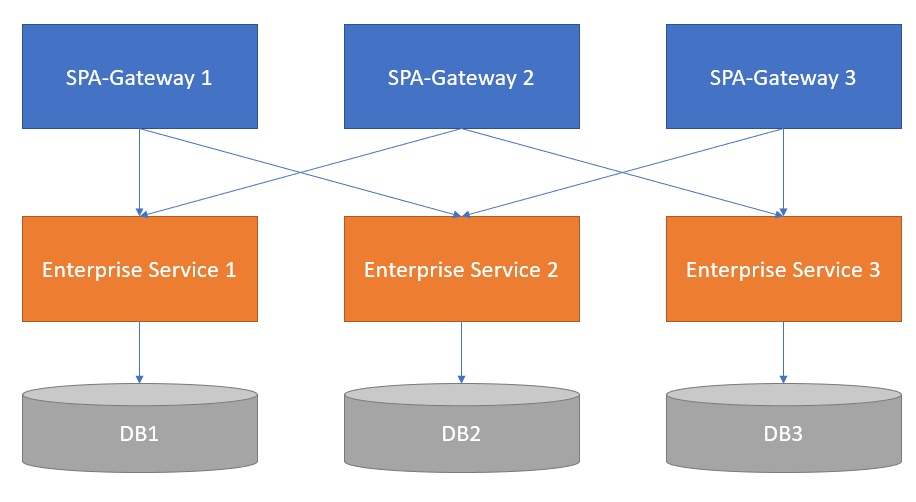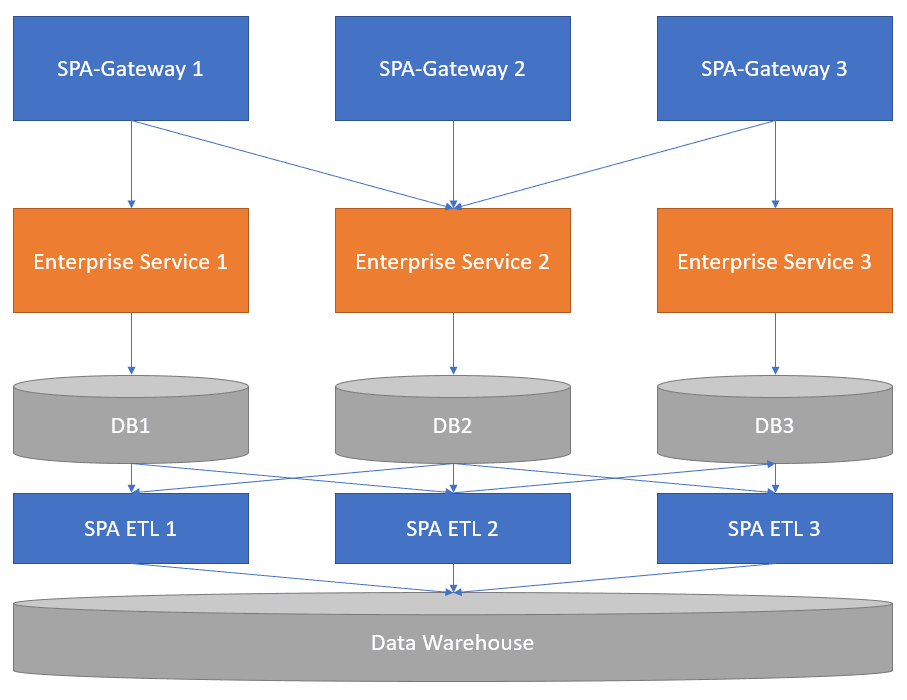Microservice Patterns That Help Large Enterprises Speed Development, Deployment and Extension
Continuously build, test and monitor your Microservices for optimal performance.

Summary
Increase the productivity of your team, and the reliability of your code, with these useful microservice patterns.
This is the first in a two-part series on microservice patterns and anti-patterns. In this article, we’ll focus on some useful patterns that, when leveraged, can speed up development, deployment, and extension. In the next article, we’ll focus on how microservice patterns can become toxic, create more overhead and unreliability, and become an unmanageable mess.Microservice patterns assume a large-scale enterprise-style environment. If you’re working with only a small set of services (1 to 5) you won’t feel the positive impact as strongly as organizations with 10, 100, or 1000+ services. My biggest pattern for startups and smaller projects is to not overthink and add complexity for complexity’s sake. Patterns are meant to aid in solving problems—they are not a hammer with which to bludgeon the engineering team. So use them with this in mind.
Open for Extension, Closed for Modification
We’re going to start our patterns talk with a principle rather than a pattern. Software development teams working on microservices get more mileage out of this one principle than most any other pattern or principle. It’s a classic pattern from the SOLID principles of Robert C. Martin (Uncle Bob).
In short, being open for extension and closed for modification means leaving your code open to add new functionality via inheritance but closed for direct modifications. I take a bit of a looser definition that tends to be more pragmatic. My definition is, “Don’t break existing contracts.” It’s fine to add methods but don’t change the signature of existing methods. Nor should you change the functionality of an established method.
Why is This Pattern So Powerful in Microservices?
When you have disparate teams working on different services that have to interoperate with one another, you need a certain level of reliability. I, as a consumer of a service, need to be able to depend on the service in the future, even as new features are added.
How Do We Manifest this Pattern?
Easy. Don’t break your contracts. There’s never a good reason to break an existing production contract. However, there could be lots of good reasons to add to it, thereby making it “open for extension and closed for modification.” For example, if you have to start collecting new data as part of a service, add a new endpoint and set a timeline to depreciate the old service call, but don’t do both in a single step. Likewise with data management: If you need to rename a column of data, just add a new column and leave the old column empty for awhile. When you depreciate an old service, it’s a good time to do any clean-up that goes with that depreciation. If you can adhere to this principle, everyone in your organization with have a better development experience.
Pattern: Enterprise Services with SPA Gateways
When we start building out large applications and moving towards a microservice paradigm, the issue of manageability quickly rises to the surface. We have to address manageability at many layers, and also must consider dependency management. Microservices can quickly become a glued-together mess with tightly coupled dependencies. Instead of having a monolithic “big ball of mud,” we create a “mudslide.”
One way to address these problems is to introduce the notion of Enterprise Domain Services that are responsible for the tasks within different domains in your organization, and then combine that domain-specific logic into more meaningful activities (i.e., product features) at the Single Page Application (SPA) gateway layer. The SPA gateway serves to take some subset of the overall functionality of an application (i.e., a single page worth) and codify that functionality, delegating the “hard parts” (persistence, state management, third-party calls, etc.) off to the associative enterprise services. In this pattern, each enterprise service either owns its own data as a single database, a collection of databases, or as an owned schema as part of a larger enterprise database.
Pattern: SPA Services with Gateway and ETL
Now we are going to ramp up the complexity a bit. One of the big questions people get into when they start down the microservices path is, “How do I join complex data?” In the Enterprise Services with SPA gateways example above, you would just call into multiple services. This is fine when you’re combining two to three points of data, but what about when you need really in-depth questions answered? How do you find, for instance, all the demographic data for one region’s customers who had invoices for the green version of an item in the second quarter of the month?
This question isn’t incredibly difficult if you have all the data together in a single database. But then you might start violating single responsibility principles pretty fast. The goal here then is to delegate that responsibility to a service that’s really good at just joining data via ETL (Extract, Transform, Load). ETL is a pattern for data warehousing where you extract data from disparate data sources, transform the data into something meaningful to the business, and load the transformed data somewhere else for utilization. The team that owns the domain that will be asking these types of demographic questions will be responsible for the care and feeding of services that perform the ETL, the database or schema where the transformed data is stored, and the services(s) that provide access to it.
Why Not Just Make a Multi-Domain Call at the Database?
This is a fair question, and on a small project it may be reasonable to do so. But on large projects with lots of moving parts, each part must be able to move independently. If we are combining directly at the DB level, we’re pretty much guaranteeing that the data will only ever travel together on that single DB, which is no big deal with small volumes of data. However, once we start dealing with tens, hundreds or thousands of terabytes, this becomes more of a big deal as it greatly impacts the way we scale domains independently. Using ETLs and data warehousing strategies to provide an abstraction layer on the movement and combination of our data might require us to update our ETL if we move the data around. But this feat is much more manageable than trying to untangle thousands of nested, stored procedures across every domain.
Closing Thoughts
Remember, these are just some of the available patterns. Your goal here is to solve problems, not create more problems. If a particular pattern isn’t working well for your purpose, it’s okay to create your own, or mix and match.
One of the easiest ways to get a handle on large projects with lots of domains is to use tools like AppDynamics with automatic mapping functionality to get a better understanding of the dependency graph. This will help you sort out the tangled mess of wires.
Remember, the best way to eat an elephant is one bite at a time.
In my next blog, we’ll look at some common anti-patterns, which at first may seem like really good ideas. But anti-patterns can cause problems pretty quickly and make it difficult to scale and maintain your projects.
Continuously build, test and monitor your Microservices for optimal performance.






